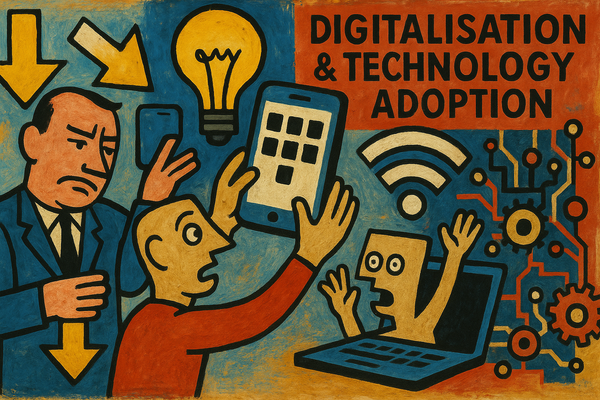From Loyalty Points to AR Adventures: How Gamification is Reshaping Tourism

The Rise of Gamification in Tourism
Tourism has always been about experiences, but the rapid acceleration of digital technology is changing the way consumers interact with destinations, brands, and loyalty programmes. Gamification—the application of game-like mechanics to non-game environments—is emerging as a powerful tool to engage travellers, influence behaviour, and enhance brand loyalty. With travel increasingly shaped by digital-first experiences, gamification is not just a marketing gimmick; it is a strategic approach that leverages psychology, data analytics, and immersive technology to redefine customer engagement. From augmented reality (AR)-driven exploration to eco-friendly rewards systems, gamification is reshaping the tourism industry in ways that extend beyond traditional loyalty points and into the realm of behavioural transformation.
The Psychology Behind Gamification
The success of gamification in tourism is rooted in fundamental principles of human psychology. Motivation theory suggests that individuals are driven by extrinsic rewards—such as discounts, loyalty points, or exclusive access—and intrinsic rewards, which include personal satisfaction, curiosity, and the joy of discovery. Well-designed gamified experiences tap into both. By incorporating elements such as achievement badges, real-time feedback, progress tracking, and competitive leaderboards, travel brands can create a sense of accomplishment and engagement that keeps consumers invested in the experience.
Beyond motivation, the principle of loss aversion plays a crucial role. Consumers are more likely to engage with a brand if they perceive that they are accumulating rewards or advancing towards a goal. This is why gamification often employs tiered loyalty structures, where higher levels unlock better benefits. Digital leaderboards and achievement-based progressions have proven effective in increasing engagement across multiple industries, and tourism is no exception.
Transforming Customer Engagement
Tourism brands that integrate gamification effectively are not just entertaining their customers but actively shaping behaviour. One of the most effective applications of gamification is in customer loyalty programmes. Traditional points-based systems, which have long been the foundation of airline miles and hotel rewards, are evolving into interactive experiences. Some travel companies have moved beyond simple transactions, incorporating digital challenges, social sharing incentives, and real-time progress tracking into their programmes.
For instance, some airlines now offer gamified incentives for travellers who opt for eco-friendly choices, such as choosing carbon-offset flights or declining in-flight meal packaging. Instead of merely rewarding purchases, brands are using gamification to encourage sustainable behaviours. Similarly, hotel chains are experimenting with gamified experiences that reward guests for engaging with on-site sustainability initiatives, such as reusing towels, participating in energy-saving challenges, or opting out of daily housekeeping services. These efforts not only contribute to environmental goals but also foster deeper brand engagement by aligning corporate responsibility with consumer participation.
The Role of Augmented and Virtual Reality
The integration of augmented reality (AR) and virtual reality (VR) has pushed gamification beyond mere digital badges and into immersive storytelling. Cities and cultural sites are increasingly leveraging AR technology to transform traditional sightseeing into interactive adventures. Instead of static plaques and guidebooks, travellers can now use their smartphones to unlock digital layers of history, storytelling, and augmented experiences.
AR-driven scavenger hunts, for example, have proven to be a compelling way to enhance tourist engagement. Museums and heritage sites have developed location-based AR experiences that allow visitors to discover hidden stories, collect digital artefacts, or compete in challenges that deepen their understanding of a destination. Some cities have even gamified local exploration, offering rewards for completing designated walking routes or uncovering digital clues hidden in AR-enhanced environments.
Similarly, VR has created new opportunities for pre-travel engagement. Some travel brands use VR-based previews, allowing prospective travellers to explore destinations virtually before making a booking. These interactive previews, often structured as gamified experiences, increase confidence in travel decisions while fostering a stronger emotional connection with the destination.
Case Studies in Gamified Tourism
Several companies have successfully implemented gamification to drive engagement and customer retention. Expedia, for example, has introduced interactive reward systems where customers earn points not just for booking travel but also for engaging with content, completing challenges, and participating in quizzes that test their travel knowledge. This approach keeps consumers engaged with the brand even when they are not actively planning a trip.
Another example is Cluetivity, a company that specialises in gamified AR city tours. By blending traditional sightseeing with interactive gaming elements, Cluetivity’s experiences turn urban exploration into an engaging challenge, appealing to younger travellers who seek more dynamic and participatory travel experiences. Similarly, Google Lens has been leveraged by some tourism boards to provide gamified AR interactions at historical sites, allowing visitors to unlock additional content by scanning monuments or participating in location-based challenges.
Challenges and Ethical Considerations
Despite its potential, gamification in tourism is not without its challenges. One of the primary concerns is whether gamified incentives genuinely encourage sustainable and responsible travel behaviours or merely serve as a marketing tool to boost brand engagement. For instance, while rewarding eco-friendly actions such as carbon-offset purchases or waste reduction is beneficial, there is a risk that these incentives may be seen as superficial rather than driving long-term behavioural change.
Another ethical consideration is the data-driven nature of gamification. Many gamified travel experiences rely on tracking consumer behaviour, preferences, and location data. While this enables personalised experiences, it also raises concerns about privacy and data security. Travel brands must strike a balance between personalisation and consumer trust, ensuring that data collection is transparent and that users have control over how their information is used.
The Future of Gamified Travel Experiences
As the travel industry continues to evolve in a digital-first landscape, gamification will play an increasingly central role in shaping consumer interactions. The fusion of artificial intelligence, blockchain, and extended reality technologies will likely lead to even more sophisticated gamified experiences. AI-driven personalisation will enable real-time adaptation of gamified travel incentives based on user preferences, while blockchain technology could be used to create verifiable, transparent reward systems that enhance consumer trust.
Looking ahead, the question is not whether gamification will remain relevant in tourism but rather how it will evolve to align with emerging consumer expectations. The key to success lies in designing experiences that go beyond simple engagement tactics and instead create meaningful, value-driven interactions that enhance both the travel journey and the broader sustainability goals of the industry.
Gamification is no longer just about earning points or unlocking badges—it is about transforming how travellers interact with the world. Whether through AR-powered exploration, sustainable travel incentives, or AI-driven personalisation, the future of tourism will be increasingly defined by the intersection of digital engagement and real-world experiences.




